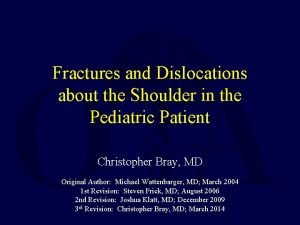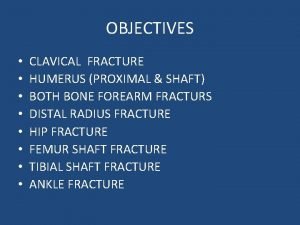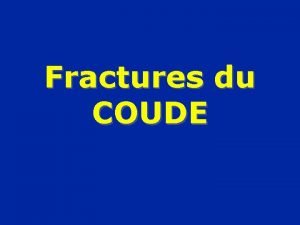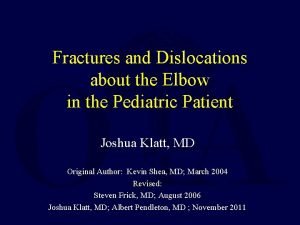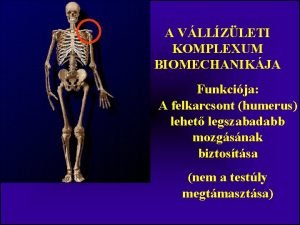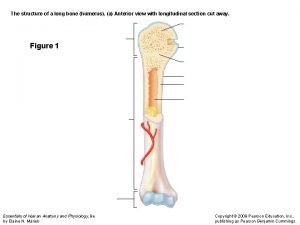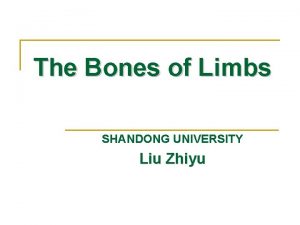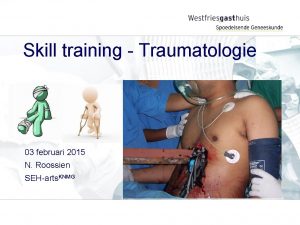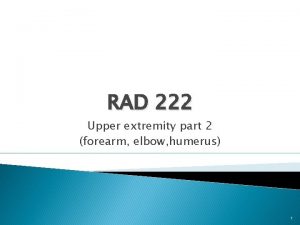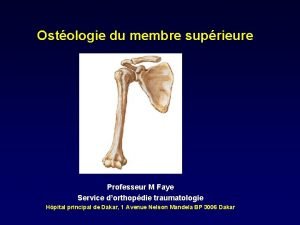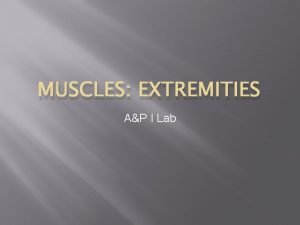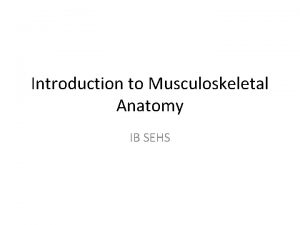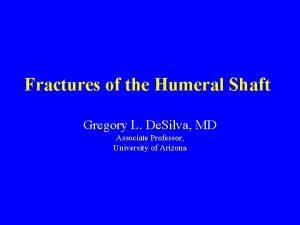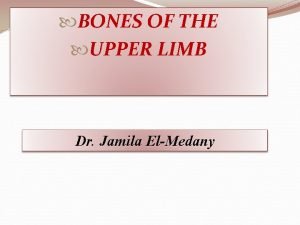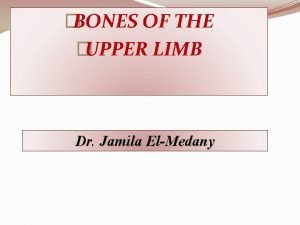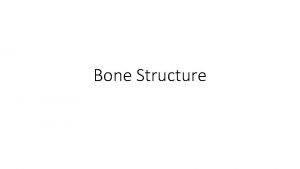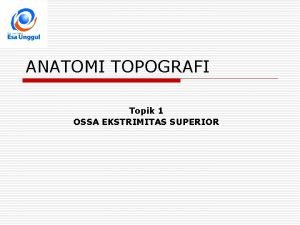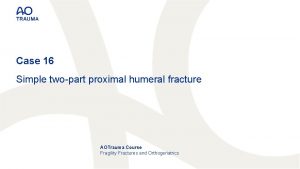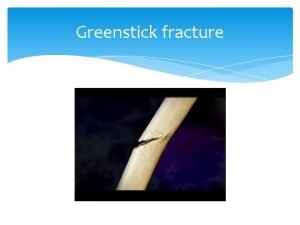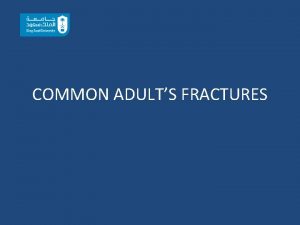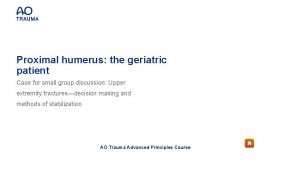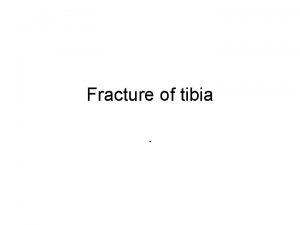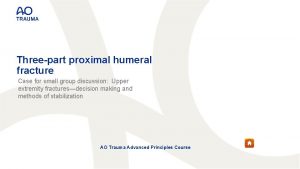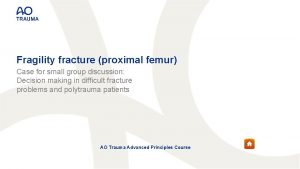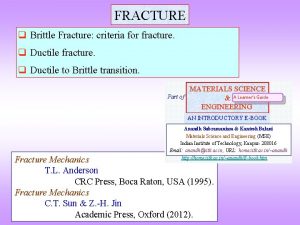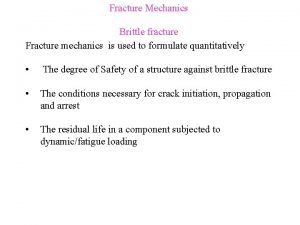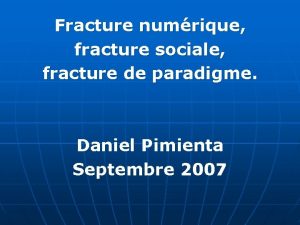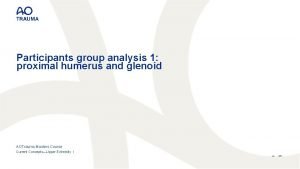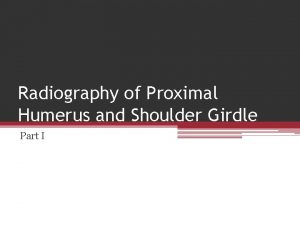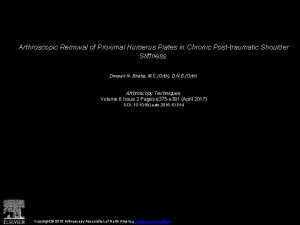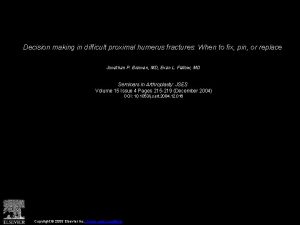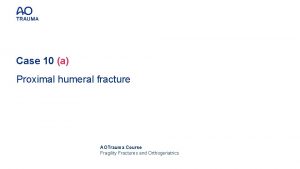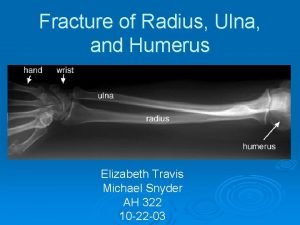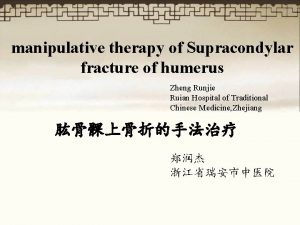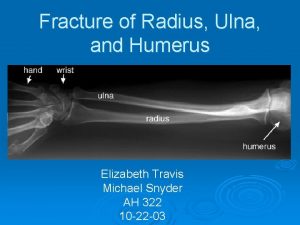Proximal humerus simple twopart fracture Case for small






















- Slides: 22

Proximal humerus: simple twopart fracture Case for small group discussion: Upper extremity fractures—decision making and methods of stabilization AO Trauma Advanced Principles Course

Case history • 52 -year-old male patient • Trauma mechanism: – The patient did fall from an about 2 -meter height (stairs) with a direct impact on the left shoulder – He cannot move the shoulder and is in severe pain – The skin is intact, we note bruising over the deltoid area and the left hemithorax – There are no neurovascular disturbances, especially not concerning the axillary – There is no clinical indication of other traumatic injuries Day 0

Case history • Medical history: – 06/2007: large cell bladder carcinoma with important post-renal failure – 01/2008: cystectomy with orthotopic bladder replacement – 10/2009: radial head fracture on right elbow – 10/2009: scaphoid fracture left wrist Day 0

X-ray Day 0

X-ray Day 0

Classification

Classification • Is there a fracture between the head and the greater tuberosity? • Is there a fracture between the head and the lesser tuberosity? • Is there a fracture between the greater tuberosity and the shaft? • Is there a fracture between the lesser tuberosity and the shaft? HGL-S

Classification • Distraction Varus

Classification Posterior tilt

Defects?

Osteoporosis? + 52 -year-old man - Oncological history

Patient and injury-related considerations • Functional demands: high – young active man • Comorbidities: ASA 2 – (oncological history: no active diseases) • Vascularization of the head: HGL-S type – (good prognosis) • Rotator cuff: no history of shoulder complaints and young patient – Likely to be intact

Treatment options • Nonoperative treatment • Fixation: – Closed nailing – Minimally invasive percutaneous plate osteosynthesis (MIPPO) – Open reduction internal fixation (ORIF)

Risk factors for failure after ORIF 1. Age 2. Osteoporosis 3. Nonanatomic reduction 4. Loss of posteromedial support Krappinger et al (Injury. 2011; 42: 1283– 1288)

Treatment choice • Intramedullary nailing: – Minimally invasive – Closed reduction – Biomechanically superior stability in case of medial defect

Technique Extend the shoulder

Technique

Technique

Technique

Follow-up X-rays Week 6

Follow-up X-rays Week 52

Take-home messages • Evaluate H-G-L-S and displacement (varus/valgus and posterior tilt). • Evaluate defects and osteoporosis. • Evaluate biological parameters (patient needs – comorbidities – vascularization head – rotator cuff). • Importance of anatomical reduction and reconstruction posteromedial support. • Exact operative technique, respecting the anatomical key-structures.
 U shaped coaptation splint
U shaped coaptation splint Smiths vs colles fracture
Smiths vs colles fracture Spiral fracture humerus
Spiral fracture humerus Fracture sus condylienne
Fracture sus condylienne Song classification lateral condyle
Song classification lateral condyle Glenohumeralis izület
Glenohumeralis izület Example of ductile fracture
Example of ductile fracture Best worst and average case
Best worst and average case Bryant traction
Bryant traction Humerus is a long bone
Humerus is a long bone Gluteal tuberosity
Gluteal tuberosity Botnaald humerus
Botnaald humerus Humerus trochlea
Humerus trochlea Courbure supinatrice
Courbure supinatrice Latissiums
Latissiums Sternum and humerus
Sternum and humerus Coaptation splint humerus
Coaptation splint humerus Io humerus landmarks
Io humerus landmarks Coaptation splint humerus
Coaptation splint humerus Radial groove of humerus
Radial groove of humerus Radial groove of humerus
Radial groove of humerus Long bone structure
Long bone structure Corpus humerus
Corpus humerus
